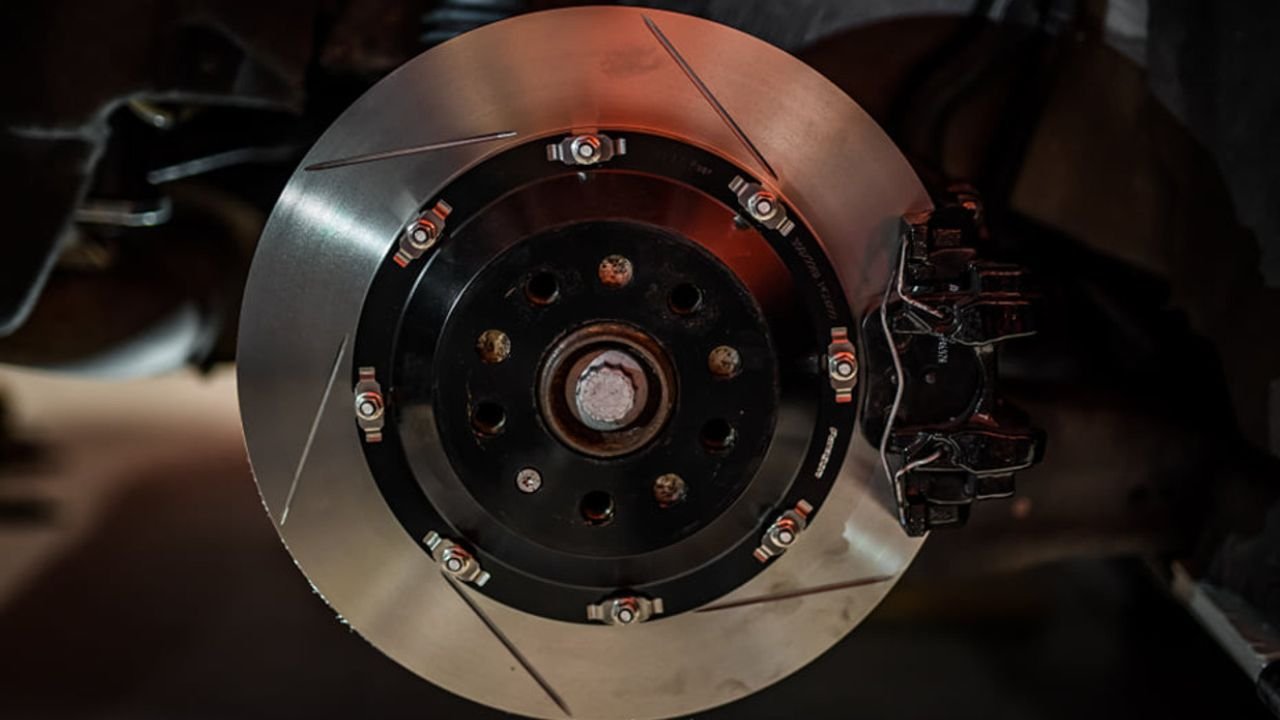The world of car maintenance and upgrades can be complex, particularly when it comes to specific components like rear rotors. For Volkswagen enthusiasts, especially those with an MK7 Golf GTI, understanding these intricate parts is crucial. Rear rotors play a significant role in your vehicle’s braking system, impacting both performance and safety. Whether you’re a DIYer looking to replace them yourself or an auto mechanic seeking detailed insights, knowing the ins and outs of rear rotors is essential. This blog post aims to demystify the topic, providing you with all the information you need about MK7 rear rotors.
Understanding the What Size are mk7 Rear Rotors
Significance in Braking Systems
Rear rotors are a critical component of your car’s braking system. They work alongside brake pads to slow down or stop your vehicle. When you press the brake pedal, brake pads clamp down on the rotors, creating friction and converting kinetic energy into thermal energy. This process slows the wheels and ultimately brings your car to a halt.
Impact on Vehicle Performance
The size and quality of rear rotors can significantly affect your car’s performance. Larger or high-quality rotors improve heat dissipation, reducing the risk of overheating during heavy braking. This is crucial for maintaining consistent braking performance, especially in demanding driving conditions like track days or mountainous terrain.
Safety Considerations
Safety is paramount when it comes to your car’s braking system. Incorrect rotor sizes or worn-out rotors can lead to reduced braking efficiency, increasing stopping distances and compromising safety. Regularly inspecting and maintaining your rear rotors ensures optimal braking performance and keeps you safe on the road.
Identifying MK7 Rear Rotor Sizes
Variations in Rotor Sizes
The MK7 Golf GTI, like many vehicles, may come with different rear rotor sizes depending on the model year and specific trim. It’s essential to identify the correct size for your particular vehicle to ensure proper fitment and performance.
Bolt Patterns and Compatibility
When selecting rear rotors, pay attention to bolt patterns and compatibility. The MK7 Golf GTI typically features a 5-bolt pattern, but there may be variations based on specific models or upgrades. Ensure that the rotors you choose match your vehicle’s specifications to avoid any installation issues.
Common Sizes for MK7 Models
For most MK7 Golf GTIs, the rear rotors are approximately 310 mm in diameter. However, it’s crucial to verify this measurement for your specific vehicle, as aftermarket upgrades or regional variations may affect rotor sizes. Always consult your owner’s manual or a trusted automotive resource to confirm the correct size.
How to Measure MK7 Rear Rotors
Tools You’ll Need
Before you begin measuring your MK7 rear rotors, gather the necessary tools. You’ll need a jack, lug wrench, caliper or micrometer, and a ruler or tape measure. These tools will help you accurately measure the rotor’s diameter and thickness.
Step-by-Step Measurement Guide
- Lift the Vehicle: Safely lift your car using a jack and secure it with jack stands. Ensure the vehicle is stable before proceeding.
- Remove the Wheel: Use a lug wrench to remove the wheel from the hub. This will give you access to the rear rotor.
- Measure the Diameter: Using a ruler or tape measure, measure the rotor’s diameter from edge to edge. Be sure to measure across the center of the rotor for accuracy.
- Check the Thickness: Use a caliper or micrometer to measure the rotor’s thickness. This is important for assessing wear and determining if the rotor needs replacement.
- Inspect for Wear: While you’re there, inspect the rotor for signs of wear, such as grooves or uneven surfaces. If the rotor is excessively worn, it may need replacement to maintain optimal braking performance.
Ensuring Accurate Measurements
Accuracy is crucial when measuring rear rotors. Even small discrepancies can affect the rotor’s performance and compatibility with your vehicle. Take your time, double-check measurements, and consult a professional if you’re unsure.
Upgrading Your MK7 Rear Rotors
Benefits of Larger or Performance Rotors
Upgrading to larger or performance rear rotors can enhance your vehicle’s braking capabilities. Larger rotors provide more surface area for heat dissipation, reducing the risk of brake fade during intense driving. Performance rotors often feature improved materials and designs, offering better durability and stopping power.
Considerations for Upgrades
Before upgrading your rear rotors, consider your driving habits and needs. If you frequently engage in spirited driving or participate in track events, performance rotors may be beneficial. However, ensure that the upgrade is compatible with your existing braking system and suspension components.
Installation Tips
When installing new rear rotors, follow these tips for a successful upgrade:
- Choose Quality Brands: Opt for rotors from reputable manufacturers known for their quality and performance.
- Follow Proper Installation Procedures: Ensure that the rotors are installed according to manufacturer guidelines. Proper torque settings and alignment are crucial for optimal performance.
- Break-In Period: Allow for a break-in period after installation, following any specific instructions provided by the manufacturer. This ensures that the new rotors and pads seat properly, maximizing performance and longevity.
Maintenance Tips for MK7 Rear Rotors
Regular Inspection and Cleaning
Regularly inspect your rear rotors for signs of wear, corrosion, or damage. Clean them periodically to remove brake dust and debris, which can affect performance and longevity. Use a soft brush or cloth and a mild cleaning solution to prevent damage to the rotor’s surface.
Monitoring Wear and Tear
Keep an eye on rotor thickness and wear patterns. If you notice excessive wear or uneven surfaces, it may be time for replacement. Consistent monitoring helps maintain optimal braking performance and prevents potential safety issues.
Addressing Common Issues
If you experience issues like pulsating brakes or grinding noises, it may indicate rotor problems. Address these issues promptly by inspecting and, if necessary, replacing the affected rotors. Ignoring these warning signs can lead to more significant problems and increased repair costs.
You May Also Like: Fixing Error Code P1326: A Comprehensive Guide
Conclusion
Rear rotors are a vital component of your MK7 Golf GTI’s braking system, impacting performance, safety, and overall driving experience. Understanding the correct rotor sizes, measuring them accurately, and maintaining them properly is essential for any Volkswagen enthusiast. Whether you’re replacing, upgrading, or simply maintaining your rear rotors, the insights shared in this blog will guide you through the process with confidence.
FAQs
What Size Are MK7 Rear Rotors?
For most MK7 Golf GTIs, rear rotors are approximately 310 mm in diameter. However, it’s essential to verify this for your specific vehicle.
How Often Should I Inspect My Rear Rotors?
Regular inspections should occur at least every six months. Look for signs of wear, corrosion, or damage to ensure optimal performance.
Can I Upgrade My Rear Rotors on My Own?
While possible, upgrading rear rotors requires mechanical knowledge and proper tools. Consider consulting a professional if you’re unsure about the process.










